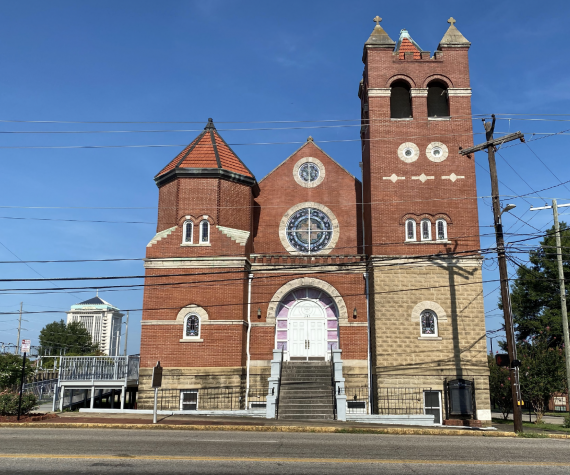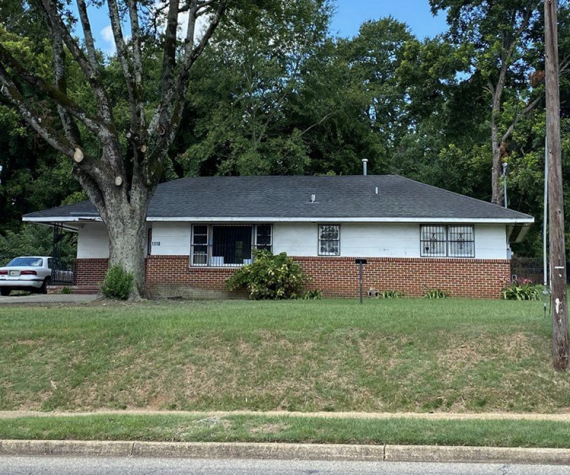Assessment Goals
The Assessments directly address the typical challenges identified by the Alabama African American Civil Rights Heritage Site Consortium's ongoing work and advocacy, including scarce financial resources for historic preservation and maintenance work, extraordinary demands on volunteer managers, and access to professional advice for technical preservation and design. The Assessment was therefore designed to quickly study and clarify priorities and next steps, in contrast to the exhaustive studies that are more typically undertaken in preservation practice (such as historic structures reports, preservation plans, capital campaigns, etc.).
Objectives of the Assessment:
(1) Study the status of, and connections between, three key site management factors (management structure and capacity, interpretation of stories and spaces, physical condition of buildings and sites;
(2) Use the site stewards’ time efficiently and respectfully, and
(3) Minimize the professionals' time needed to carry out the Assessment.
The Consortium’s 2021 survey of its 20 member sites directly informed this initiative. Having asked all site stewards to express their priority issues and needs in varied ways, a picture of their collective needs emerged. Though the priorities of individual sites vary, of course, the need for both physical preservation and developing greater management capacity were identified as high priorities across the Consortium sites. The difficulties of prioritizing public engagement through interpretation and public programming also stood out. The survey data suggested that assessing and addressing physical preservation, management/financing, and interpretive/programming needs holistically would be the most valuable approach for site stewards.
Over time, civil rights heritage sites have been created, preserved, and sustained by heroic efforts of pioneering preservationists. As a group, the sites bear long legacies of public indifference, hostility, and erasure of the places and narratives; under-resourced management; and an under-supply of professional expertise and other resources (including funding, political capital, etc.). The specific challenges faced by each AAACRHSC sites vary, including, but not limited to: compromised physical conditions and deferred maintenance, small audiences, lack of connection to heritage tourism markets, limited management capacity, and lack of financial and human resources. The organizations running the sites are varied, too—some have established entities (501c3’s, church polities), some have no formal organization and are guided by volunteers. Our site assessment is designed to be useful no matter what kinds of challenges are faced and how serious they are.
This project was carried out by a project team of Penn/CPCRS and Tuskegee University professionals and students, in close collaboration with AAACRHSC, which leads and coordinates efforts across 20 heritage sites. The Assessments are part of a larger, coordinated effort to advance the sustainable site management of Black heritage sites related to civil rights histories.
What is sustainable heritage site management?
“Sustainable” can mean a lot of different things. Preservation professionals tend to think first (and pretty exclusively) about sustaining physical resources and making decisions based overwhelmingly on architectural integrity. This is important, but not an end in itself. As preservationists, we should foremost be concerned with sustaining cultural significance – which draws on architectural integrity as well as the effectiveness of interpretation and social processes that reproduce notions of value. To make our sustainability assessments practical for AAACRHSC members, we use a broader notion of sustainability that specifically accounts for the organization that actually carries out management. Fixing the buildings and interpreting the stories won’t alone sustain the place – the stewarding organization and the story of the site must also be sustained.
For these Assessments, “sustain” is defined more holistically than the norm in the field of preservation. Sustaining a site includes:
(1) The functions and capacity of a site’s management structure.
(2) Repairing or conserving the physical conditions of buildings and site.
(3) Interpreting histories to the public.
To gauge the capacity of sites in each of these three factors of sustainability, the project team looked carefully at each factor and how they are connected in practice. This is a departure from typical professional assessments, which evaluate one of these factors at great depth, require considerable resources, and offer recommendations for one aspect of the site.
This sustainability assessment is meant first and foremost to meet the needs of the owning/stewarding organizations themselves. Our model looks to support the managers in making well-informed decisions for the present/future of their site holistically. Therefore, the work centers on the people doing the managing, and adopting their perspective as stewards of the whole site and organization. In this report, our team weighs the entire range of physical, financial, human-resource, interpretive, and other needs of the site, and proposes priority measures to find for and allocate resources, carry out repairs, make partnerships, create experiences, etc.
2022 Pilot Assessments
Consortium leadership identified two sites in its network with whom the team worked in Summer 2022 -- First Baptist Church and Trinity Lutheran Parsonage, both located in Montgomery. The CPCRS-TU team conducted pre-visit conversations, a short site visit, and follow up tasks post-visit for each assessment. (Note that these two summer 2022 Assessments were regarded as pilot studies, the first iteration of a process that will be evaluated and revised before being implemented further.)
Management
First Baptist benefits from active and engaged leadership, though it is on the verge of generational change. To be sustained, an influx of professional capacity is needed to support fund-raising, grants management, and site management more generally, as a next generation of church leaders are cultivated from within the congregation. The creation of a nonprofit foundation -- or partnership with an allied heritage site -- should be explored to build professional capacity, which is needed before additional partnerships, revenue, or programming can be activated.
Physical
Materially, the First Baptist Church building is in fair condition. Repairs to correct water infiltration are priorities. Rehabilitation of the other church-owned properties should be considered to accommodate programming.
Interpretation
The story of First Baptist Church is complex and highly significant, and extends beyond the extraordinary events connected directly to the events of May 1961. Current public interpretation of the long history and cultural significance of the site is quite limited. Connections to the surrounding neighborhood and the broader histories of Montgomery present unrealized opportunities to tell the nationally significant stories of 20th-century Civil Rights struggles. Work is currently being done to add the church to the National Register of Historic Places.
Management
The Parsonage's active leadership, and that of the church more broadly, is on the verge of generational change. To be sustained, an influx of professional capacity is needed to support fund-raising, grants management, and site management (including coordination of professional consultants to address the two issues above). Greater capacity must be in place before additional partnerships, revenue, or programming can be activated.
Physical
Materially, the Parsonage building is in fair condition, in need of repairs (mostly minor) and rehabilitation to accommodate programming. The entire site - the complex of Parsonage, Church, associated yards and grounds - is in good condition.
Interpretation
The story of the Lutheran Parsonage is complex, extensive, and extends beyond the extraordinary events connected directly to Pastor Robert Graetz and the house itself. Current interpretation is quite limited. Connections to the surrounding neighborhoods and the broader histories of Montgomery present unrealized opportunities to tell the nationally significant stories of 20th-century Civil Rights struggles.
A sincere thank you to our partners and collaborators on this initiative.
Project Lead: Randy Mason Lead Advisors: Kwesi Daniels and Priscilla Hancock Cooper Project Manager: Sarah Lerner Preservation Architect: Tiffani Simple, Simple Design Studios Research Assistants: Jocelyn Johnson (Tuskegee University) and Calvin Nguyen (University of Pennsylvania) Site Reps: Dr. Roosevelt Daniel and Mr. Howard Davis (First Baptist Church); Willowdean Malden, Rosalind King, Vincent Hall and Tori King (Trinity Lutheran)






